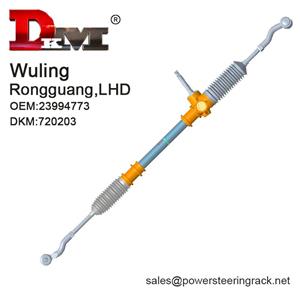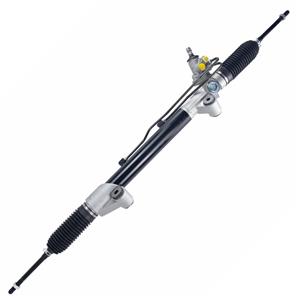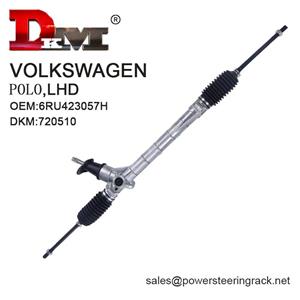What causes car power steering fluid to burn out?
The power steering system is a vital part of modern cars, helping drivers to steer the steering wheel more easily by providing hydraulic power assistance. The normal operation of the power steering system depends on power steering fluid (also known as hydraulic oil), which is responsible for transmitting pressure in the system, as well as lubricating and cooling. However, in some cases, car owners may notice that the power steering fluid is burning, that is, the fluid deteriorates, darkens in color, produces a burnt smell, and even causes power steering failure. Power steering fluid burning is a serious problem because it can cause damage to the entire steering system and even affect driving safety.
So, what causes power steering fluid to burn out? This article will delve into the various reasons why power steering fluid burns out, from the characteristics of the fluid itself to possible mechanical or thermal problems in the system, to help car owners better understand this phenomenon and how to prevent it.

What are the functions and characteristics of power steering fluid?
Before exploring the reasons for power steering fluid burning out, it is necessary to first understand the function and characteristics of power steering fluid. The main functions of power steering fluid include:
1. Transmitting pressure: The power steering system pushes the fluid through the hydraulic pump to make it flow and provide the required hydraulic pressure for the steering system, helping the driver to easily turn the steering wheel.
2. Lubrication: The fluid lubricates various components in the steering system during the flow process, reducing friction and extending the service life of the components.
3. Cooling: Power steering fluid can help the components of the steering system dissipate heat and prevent the system from being damaged by excessive temperature.
Power steering fluid is usually composed of specially designed fluids. It has the characteristics of high temperature resistance, oxidation resistance, corrosion resistance, etc., and can remain stable under high pressure. However, with the increase of usage time or the influence of external factors, the fluid may deteriorate and cause the hydraulic system to fail.
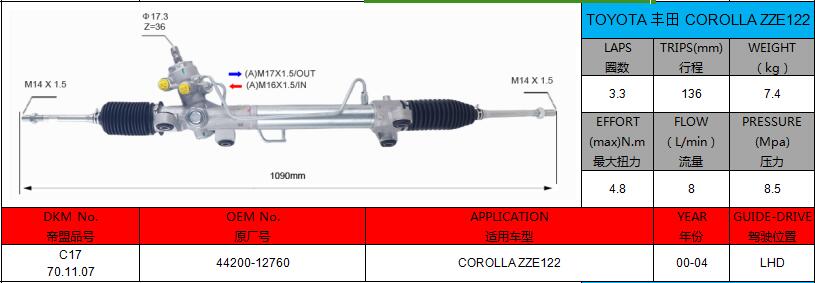
What are the main reasons for power steering fluid burning?
The burning of power steering fluid is usually a complex process caused by the combined action of multiple factors. The following are some common reasons for power steering fluid burning:
1. Excessive heat accumulation
When the power steering system is working, it will generate a certain amount of heat. Especially when driving at high speed for a long time or turning frequently, the fluid in the system will gradually heat up due to high temperature. If the power steering system does not have sufficient cooling function, or there are factors in the system that hinder the circulation of the fluid, the heat cannot be effectively dissipated, which will cause the fluid temperature to continue to rise. When the temperature exceeds the heat resistance limit of the fluid, the fluid will undergo chemical decomposition, the color will darken, the texture will become thicker, and even produce a burnt smell, showing a "burned" phenomenon.
Common heat sources include:
● Overheating of the power steering pump: The power steering pump is the core component that generates hydraulic pressure in the system. If the power steering pump is over-operated for a long time, especially when driving at low speed or parking, the pump will generate too much heat due to excessive load, which will directly accelerate the deterioration of the fluid.
● Friction in the system: If the components in the power steering system, such as the steering rack or gearbox, have friction or stagnation, it will also increase the heat inside the system, which will cause the fluid to heat up.
2. Poor fluid circulation
The power steering fluid needs to circulate continuously in the system to ensure smooth pressure transmission and heat dissipation. If the circulation of the fluid is blocked, such as due to pipe blockage or hydraulic pump failure, the fluid will not flow normally, resulting in excessive temperature in local areas. When circulation is blocked, the fluid will generate excessive pressure and temperature in certain areas, eventually causing the fluid to burn.
Reasons for poor circulation include:
● Pipeline blockage: Due to impurities, silt or fluid deterioration, the pipeline of the power steering system may be blocked, affecting the flow of the fluid and causing the system temperature to rise.
● Hydraulic pump failure: The hydraulic pump is responsible for driving the flow of the fluid. If the pump performance deteriorates or is damaged, the fluid circulation rate will decrease and the heat in the system cannot be effectively cooled.
3. Aging or poor quality of fluid
Power steering fluid has a certain service life, and its chemical properties will gradually change over time. If the power steering fluid is not replaced for a long time, the additives in the fluid will gradually become ineffective, the anti-oxidation and anti-corrosion functions will weaken, and the viscosity and fluidity of the fluid will deteriorate. This aged fluid is more likely to decompose under high temperature or high pressure, eventually leading to burning.
In addition, the use of low-quality or unsuitable power steering fluid is also a common cause of fluid burning. Different power steering systems have different requirements for fluids. Using fluids that do not meet specifications will accelerate wear and aging within the system, leading to overheating and burning of the fluid.
4. Insufficient fluid level
Another important factor that may cause fluid burnout is a low fluid level in the power steering fluid. When the fluid level is below the normal standard, the amount of fluid in the system is insufficient to provide effective lubrication and cooling, and the local temperature of the fluid will rise rapidly, causing the fluid to deteriorate or even burn out.
Insufficient fluid level may be caused by fluid leakage or system failure. If the owner does not check and replenish the fluid in time, long-term insufficient fluid level will cause serious damage to the system, not only the burning of the fluid, but also damage to the power steering pump or other key components.
5. Air enters the system
The power steering system is designed to be completely closed to prevent air from entering. However, in some cases, air may enter the power steering system through the leak point of the system or accidentally during maintenance. After the air enters, bubbles will form, affecting the normal flow and pressure transmission of the fluid. In addition, the entry of air will cause the oxidation reaction in the fluid to accelerate, making the fluid more easily decomposed at high temperatures, resulting in the burning of the fluid.
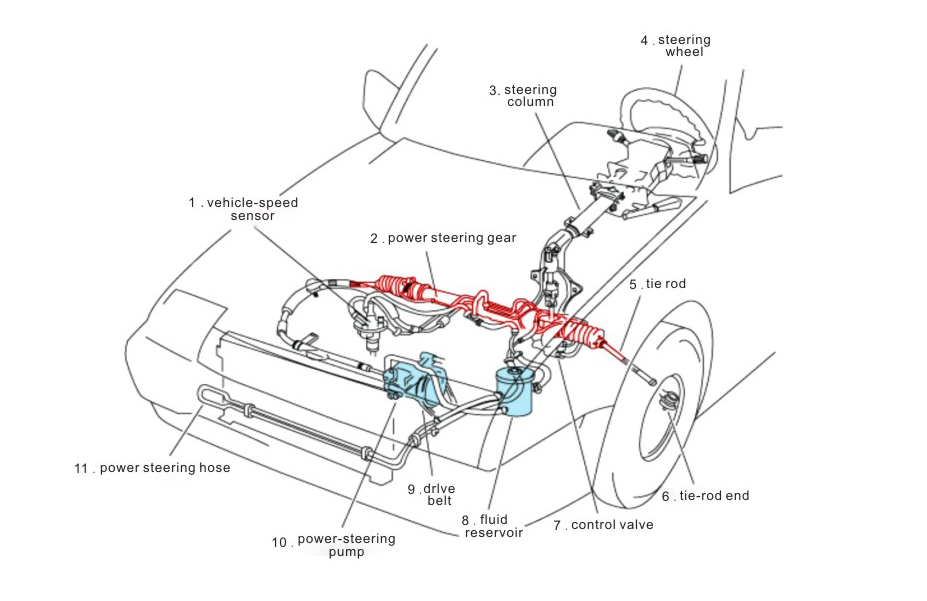
How to identify the signs of power steering fluid burnout?
Now that you know why the power steering fluid burns, you also need to know how to identify the problem so you can take timely action to avoid further damage. Here are some common signs of a burnt power steering fluid:
1. Darkening of the fluid: Normal power steering fluid is usually clear or light-colored. If the color of the fluid becomes unusually dark, such as black or brown, this may indicate that the fluid has deteriorated or burned.
2. Burnt odor: When the power steering fluid burns, the fluid releases a burnt-like odor. This odor is usually caused by chemical decomposition caused by overheating of the fluid.
3. Steering becomes heavy: Burning of the power steering fluid can affect the normal operation of the system, causing steering operations to become more laborious, especially when driving at low speeds or parking.
4. The system makes noise: The power steering system should be relatively quiet when operating normally. If the system makes unusual noises, such as hissing or creaking, this may be a sign of burnt fluid or pump damage.

How to prevent power steering fluid from burning?
While power steering fluid burns is a common automotive problem, it is usually preventable. Here are some ways to prevent power steering fluid from burning out:
1. Check the fluid status regularly: Car owners should check the level and color of the power steering fluid regularly. If the color of the fluid darkens or the level drops, it should be replenished or replaced in time.
2. Use high-quality power steering fluid: Make sure to use power steering fluid that meets the requirements of the vehicle manufacturer and avoid using substandard and inferior products.
3. Avoid system overheating: When driving for a long time or turning frequently, try to avoid putting too much load on the power steering system, especially when parking and driving at low speeds, and avoid turning for a long time.
4. Regularly maintain the power steering system: Regularly check the various components of the power steering system to ensure that the pump, hose, seals, etc. are in good condition to prevent fluid burning due to leakage or failure.
Guangdong Diamond Auto Parts Co., Ltd. (DKM) is a leading manufacturer of power steering systems in China. Established in 1996, we specialize in producing high-quality steering gears, racks, and hydraulic steering systems. With over 20 years of industry experience, we offer competitive wholesale prices and customized solutions tailored to meet the needs of our customers. We supply products to major car manufacturers and dealers worldwide, including in the US, Italy, Russia, and Southeast Asia. If you're looking to buy high-quality steering parts at discounted prices, get in touch with us for quotes and promotions.

